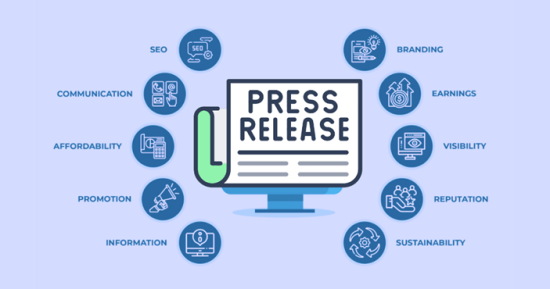
Have you ever found yourself staring at a blank page, unsure of how to begin your conclusion? Do you want to leave a lasting impression with your readers, but struggle to find the right words? Starting a conclusion can be a daunting task, but it doesn’t have to be.
In this guide, we will explore effective strategies and techniques to help you craft a strong conclusion that captivates your audience and enhances their overall reading experience. From grabbing their attention to bridging the gap between your content and the real world, we’ve got you covered.
But first, let’s take a moment to understand the importance of a well-written conclusion. A conclusion serves as more than just a summary; it ties together your main points and leaves the reader with a sense of closure. It has the power to make your content memorable, impactful, and relevant.
So, are you ready to discover the secrets of starting a conclusion that resonates with your audience? Let’s dive in and learn how to leave a lasting impression through effective conclusion writing. But before we get started, take a look at this thought-provoking image:
The Importance of a Strong Conclusion
When it comes to writing an essay or article, a strong conclusion holds significant importance in leaving a lasting impression on the reader. It goes beyond being a mere summary of the main points discussed throughout the piece. Rather, a well-crafted conclusion acts as a powerful tool that brings together the key ideas and arguments presented, enhancing the overall reader experience.
A strong conclusion serves as a bridge that connects the content to real-world relevance, making it more relatable and impactful. It allows readers to see the practical applications and broader implications of the information presented. By linking the content to relevant concepts and applications, the conclusion takes on a greater significance and relevance beyond the boundaries of the essay or article itself.
In order to create a strong conclusion, it’s essential to craft it in a way that leaves a lasting impact on the reader. This involves carefully considering the main ideas and arguments presented in the piece and finding ways to synthesize the information effectively. The conclusion should provide a sense of closure and satisfaction, leaving the reader with a clear understanding of the key takeaways and the broader implications of the content.
By understanding the importance of a strong conclusion and its role in enhancing the reader experience, you can effectively conclude your essay or article with impact and relevance. The next sections will provide you with valuable insights and techniques to help you master the art of crafting an effective conclusion. Let’s dive in!
How to Start a Conclusion?

Starting a conclusion requires effective strategies to capture the reader’s attention and set the tone for the rest of the conclusion. By employing different approaches and techniques, you can create an engaging opening sentence or paragraph that leaves a lasting impact. Here are some practical tips and guidance to help you craft a compelling conclusion.
One effective strategy to begin a conclusion is to pose a thought-provoking question that relates to the main argument or theme of your article or essay. This not only grabs the reader’s attention but also encourages them to reflect on the content they have just read. For example, you can start with a question such as, “What if we fail to take action against climate change?” This raises a compelling point and immediately captures the reader’s interest.
Another approach is to use a vivid anecdote or a relevant real-life example to kickstart your conclusion. This helps to establish a connection between the topic and the reader’s experiences, making the conclusion more relatable and engaging. Consider starting your conclusion with a story or example that highlights the impact of your argument in a tangible way.
Additionally, you can begin your conclusion by summarizing the key points discussed in the main body of your article or essay. However, avoid simply restating the information. Instead, rephrase and highlight the most important aspects to remind the reader of the significance of your argument. This approach ensures that the reader is reminded of the main ideas while also generating intrigue for what will follow in the conclusion.
Incorporating a relevant and impactful quote can also be an effective way to start a conclusion. Choose a quote that resonates with your argument and adds depth to your conclusion. This not only adds credibility to your writing but also creates an emotional connection with the reader. Make sure to attribute the quote to its author and explain how it aligns with your argument.
Identifying the Goals of Your Conclusion
In order to write an effective conclusion, it is essential to identify the goals and purpose of your conclusion beforehand. By understanding the desired outcomes of your conclusion, you can ensure that it aligns with the main argument or message of your writing, making it more impactful and relevant to the reader.
To determine the goals of your conclusion, consider the overall theme and objectives of your article or essay. Ask yourself:
- What do I want my readers to take away from the piece?
- What specific message or call to action do I want to convey?
- How can my conclusion leave a lasting impression on the reader?
By answering these questions, you can establish clear goals for your conclusion, guiding the direction of your writing and ensuring that it serves its purpose effectively.
Techniques for Writing an Effective Conclusion
Writing a compelling conclusion is essential for leaving a lasting impression on your readers. By employing specific techniques, you can ensure that your conclusion effectively summarizes your main points and leaves the reader with a deep understanding of your argument. In this section, we will explore three proven strategies for writing an effective conclusion: the “So What” strategy, revisiting themes from your introduction, and synthesizing information.
Employing the “So What” Strategy
To make your conclusion impactful, it is crucial to answer the question of “So What?” This involves explaining the significance of your main points and why they matter. Rather than simply restating your arguments, take the opportunity to provide insight into the broader implications and real-world relevance of your work. By employing the “So What” strategy, you can ensure that your conclusion resonates with your readers and compels them to reflect on the importance of your ideas.
Revisiting Themes from Your Introduction
A powerful way to create a sense of closure and cohesion in your conclusion is by revisiting themes or ideas from your introduction. By circling back to your initial points, you remind the reader of the journey they have taken throughout your article or essay. This technique helps to reinforce your argument’s consistency and highlights the relevance of your concluding thoughts. By incorporating elements from the introduction, you can provide a satisfying resolution that ties everything together.
Synthesizing Information Over Summarizing
When crafting your conclusion, it is essential to go beyond a mere summary of your main points. Instead, focus on synthesizing the information you have presented throughout your writing. Synthesis involves extracting the key ideas, connecting them, and presenting a comprehensive understanding of the topic. By synthesizing the information rather than just summarizing it, you demonstrate a deeper level of analysis and insight. This approach leaves the reader with a sense of conclusion and a richer understanding of your argument.
By employing these techniques for writing an effective conclusion, you can ensure that your closing paragraphs make a lasting impact on your readers. Remember to incorporate the “So What” strategy, revisit themes from your introduction, and synthesize information to create a conclusion that is both powerful and meaningful in the context of your article or essay.
Creating a Lasting Impression
In order to make your conclusion truly impactful, it is important to focus on creating a lasting impression on your readers. By employing a few strategic techniques, you can ensure that your conclusion leaves a powerful and memorable effect.
One effective approach is to use powerful language that resonates with your readers. Choose strong and evocative words that convey the intended emotion or message. This will help to captivate your audience and leave them with a lasting impression.
Vivid imagery can also play a significant role in creating impact in conclusion. Paint a clear and vibrant picture with your words, allowing your readers to visualize and connect with the ideas presented in your conclusion. This visual appeal will make your conclusion more memorable and engaging.
Another way to leave a lasting impression is by appealing to your readers’ emotions. Emotionally charged language can evoke strong feelings and connect with readers on a deeper level. By establishing an emotional connection through your conclusion, you can ensure that your message lingers in the minds of your audience.
Lastly, consider the overall flow and structure of your conclusion. A well-organized and coherent conclusion will have a greater impact on your readers. Ensure that your ideas are presented logically and seamlessly, allowing your conclusion to flow smoothly and leave a lasting impression.
Strategies to Avoid in Your Conclusion

In order to write an effective conclusion, it is important to understand the strategies that should be avoided. By steering clear of common conclusion mistakes and ineffective conclusion strategies, you can ensure that your conclusion leaves a lasting impact on your readers. Maintain a clear and concise focus in your conclusion, avoiding unnecessary repetition or the introduction of new ideas. This will help to create a strong and cohesive ending to your piece.
One strategy to avoid is restating your main points without providing any new insights or analysis. Instead of simply summarizing what you have already discussed, use your conclusion as an opportunity to synthesize the information and demonstrate its significance. This will show your readers that you have fully understood the implications of your argument.
Another common mistake is introducing new ideas or arguments in the conclusion. Your conclusion should not raise more questions or open new avenues of discussion. Instead, it should provide a sense of closure and bring your essay or article to a satisfying end. Stick to the main points and ideas you have already presented, ensuring that your conclusion reinforces your overall message.
Incorporating Provocative Insights or Quotations
Incorporating provocative insights or quotations in your conclusion can add depth and impact to your writing. By carefully selecting a quote that resonates with your argument or message, you can engage your readers and leave a lasting impression.
When choosing a quote, consider its relevance to your topic and how it supports your main points. Look for quotes from well-known experts or authoritative sources that align with your perspective. A resonating quote should enhance your argument and provide a unique perspective that adds value to your conclusion.
Furthermore, when incorporating insights in your conclusion, aim for texture and specificity. Rather than simply restating general information, provide specific details or examples that illustrate your main points. By adding texture to your conclusion, you make it more compelling and memorable, creating a stronger impact on your readers.
Encouraging Future Research and Action
As you near the end of your article or essay, it’s essential to consider the impact your words can have on your readers. By encouraging future research and action in your conclusion, you can inspire your audience to delve deeper into the topic and take meaningful steps towards making a difference.
One effective way to promote further action is by including a call to action in your conclusion. This can be a direct request for readers to engage in specific research, join a cause, or take a particular course of action related to the subject matter. By providing clear guidance and incentivizing participation, you can create a sense of urgency and encourage your audience to be actively involved.
An image can also be a powerful tool in encouraging research and action. Consider incorporating a relevant and visually appealing image that represents the topic of your article or essay. This can serve as a visual cue to prompt readers to take the next step and explore further. To make the image more accessible to all readers, remember to include an alt attribute that reflects the keywords related to this section, such as “encouraging research in conclusion” or “promoting further action.”
Furthermore, consider including additional resources or references in your conclusion. This can be in the form of links to related articles, books, or websites that provide more in-depth information or avenues for further exploration. By providing these resources, you empower your readers to continue their research and delve deeper into the subject matter.
Understanding the Broader Implications of Your Argument
This section will focus on understanding the broader implications of the argument presented in the article or essay. By delving deeper into the implications of your argument, you can provide a more comprehensive and thought-provoking conclusion. This helps to illuminate the impact of your argument on related issues or fields, demonstrating its relevance and significance beyond the immediate context.
Examining the broader implications allows you to connect your argument to larger conversations and debates, extending the discussion to encompass wider perspectives and considerations. By doing so, you contribute to a more comprehensive understanding of the topic and its implications for various stakeholders and disciplines.
Throughout your conclusion, it is important to highlight the impact of your argument and its relevance to related issues or fields. This helps to reinforce the significance of your work and encourages readers to consider the broader implications of your findings. By extending the discussion to larger conversations, you position your argument within a larger context, inviting further exploration and analysis.
Mastering the Art of Conclusion Transitions

When it comes to effective writing, the way you transition from the main body of your article or essay to the conclusion plays a crucial role in maintaining a seamless flow. Conclusion transitions ensure that your readers can follow the logical progression of your thoughts and ideas, ultimately enhancing the overall coherence and structure of your piece.
But how can you master the art of conclusion transitions and achieve a seamless conclusion flow? Here are some tips and techniques to help you:
1. Summarize the main points: Before transitioning to your conclusion, briefly summarize the key points and arguments you have made throughout your article or essay. This summary serves as a reminder for your readers and reinforces the central ideas that will be further addressed in your conclusion.
2. Use transitional phrases: Incorporating transitional phrases, such as “In conclusion,” “To sum up,” or “Overall,” can effectively signal the start of your conclusion. These phrases act as signposts for your readers, guiding them towards the final thoughts and reflections of your piece.
3. Provide a resolution: A strong conclusion not only summarizes the main points but also provides a resolution or a sense of closure. Consider addressing any lingering questions or uncertainties raised in your article or essay, offering insights, solutions, or recommendations that tie everything together.
4. Reiterate your thesis statement: Remind your readers of your thesis statement by paraphrasing or restating it in your conclusion. This reaffirms the central argument of your piece and reinforces the main message you want your readers to take away.
5. Engage with the broader context: Connect your conclusion to the broader context, whether it’s related fields, societal issues, or ongoing debates. By demonstrating the broader implications of your argument, you can engage your readers in a larger conversation and highlight the relevance and significance of your work.
6. Leave a lasting impression: Craft a conclusion that resonates with your readers long after they finish reading your piece. Consider ending with a thought-provoking quote, a powerful image, or a rhetorical question that encourages further reflection and leaves a lasting impact.
By incorporating these tips and techniques into your writing process, you can master the art of conclusion transitions and ensure a seamless flow between the main body and the conclusion of your article or essay. Remember, a well-structured and cohesive conclusion goes a long way in leaving a strong final impression on your readers.
Polishing Your Conclusion: Tips and Tricks
After crafting a strong conclusion, it’s essential to polish and finalize it to ensure clarity, coherence, and effectiveness. By reviewing and revising your conclusion, you can elevate its impact and leave a lasting impression on your readers. Here are some tips and tricks to help you perfect your conclusion:
– Proofread and edit your conclusion carefully to eliminate any errors or inconsistencies that may detract from its overall quality. Pay attention to grammar, punctuation, and sentence structure to ensure your conclusion flows smoothly.
– Consider the structure and organization of your conclusion. Make sure it follows a logical progression and ties back to the main points of your article or essay. A well-structured conclusion enhances the reader’s understanding and reinforces the key arguments or messages presented.
– Use powerful and concise language to make your conclusion impactful. Choose your words carefully to convey your ideas effectively and evoke the desired emotions in your readers. Avoid using excessive jargon or complex terminology that may confuse or alienate your audience.
– Connect your conclusion to the broader themes or ideas introduced in the previous sections of your writing. By linking your conclusion to the introduction or main body of your piece, you create a sense of cohesion and closure. This helps your readers understand the relevance and significance of your arguments.
– Consider incorporating a thought-provoking quote or insightful statement that resonates with your argument. This can add depth and texture to your conclusion, leaving a lasting impression on your readers. Ensure that the quote or insight aligns with your overall message and reinforces the key points you have made throughout your piece.
Avoiding Common Pitfalls in Conclusion Writing
In conclusion writing, it’s essential to be aware of common pitfalls that can undermine the effectiveness of your conclusion. By recognizing and avoiding these mistakes, you can ensure that your conclusion is strong, impactful, and leaves a lasting impression on the reader.
One common mistake to avoid is summarizing the main points of your essay or article in the conclusion, as this can make your conclusion feel repetitive and redundant. Instead, focus on providing a sense of closure and expanding on the broader implications of your argument.
Another pitfall to avoid is introducing new ideas or information in the conclusion. Your conclusion should not introduce any new concepts or arguments but rather reiterate and reinforce the key points you have already discussed. This helps maintain the coherence of your piece and ensures that your conclusion flows seamlessly from the main body of your writing.
Lastly, be mindful of the tone and language you use in your conclusion. Avoid using overly emotional or melodramatic language, as this can come across as insincere and weaken the impact of your conclusion. Instead, aim for a balanced and confident tone that reinforces the strength of your argument.
FAQs on How to Start a Conclusion
How to start a conclusion effectively in an essay?
Begin your conclusion by restating the thesis statement in a rephrased manner to remind readers of your main argument. Follow this with a summary of the key points discussed in the essay.
How to start a conclusion with a solid opening sentence?
Use a transitional phrase such as “In conclusion,” “To sum up,” or “Ultimately” to signal the beginning of your conclusion. Then, immediately address your discussion’s main takeaway or most significant point.
How to start a conclusion in a research paper?
Start your conclusion by reiterating the research question or objective and summarizing how your findings support your thesis. Highlight the importance of your research and its implications for the field.
How to start a conclusion in a persuasive essay?
Begin your conclusion by reinforcing your stance on the issue and summarizing the most compelling arguments you presented. Use robust and persuasive language to leave a lasting impression on the reader.








